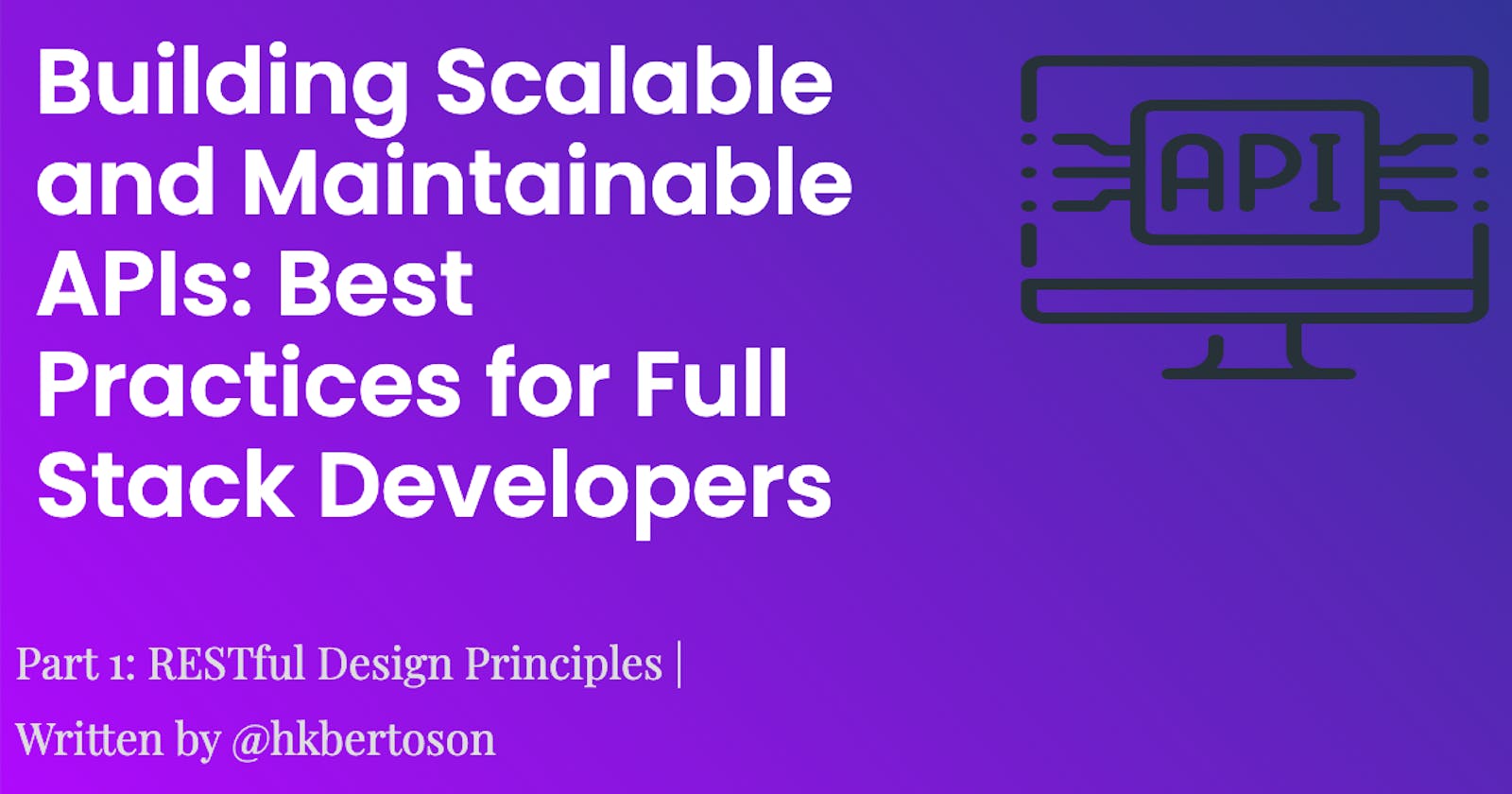Building Scalable and Maintainable APIs: Best Practices for Full Stack Developers
Part 1: RESTful Design Principles
APIs, or Application Programming Interfaces, are the backbone that connect the front-end and back-end of web applications.
Design Principles for a Rest API
Representational State Transfer (REST) is an architectural style that allows for the design of modern web APIs. Adhering to RESTful princples allows for a standardized approach, while also enhancing the usability and maintainability of APIs.
Fundamentals of RESTful API Design
Resource-Based Arcitecture
RESTful APIs are centered around resources, which can be any object, data, or service that the API exposes. Each resource is identified by a unique URL, and interactions with these resources are governed by standard HTTP methods.
Statelessness
REST is stateless, this means that each request from the client to the server must contain all the information needed to fullfill the request. This simplifies server implementation and improves scalability.
Uniform Interface
A uniform interface is a key principle in RESTful design. It includes four constraints:
Identification of Resources: Resources are identified by unique URIs.
Manipulation of Resources through Representations: Resources can be manipulated by representations, such as JSON or XML.
Self-Descriptive Messages: Each message from the server includes all the information needed to understand and process it.
Hypermedia as the Engine of Application State (HATEOAS): Clients interact with the application entirely through hypermedia provided dynamically by the application servers.
Resource Naming Conventions
Use Plural Nouns:
Resource names in RESTful APIs are often plural nouns. For example, /users instead /user.
Meaninful and Concise:
Resource names should be clear and concise, reflecting the purpose of the resource. For instance, /products or /orders.
Hierarchical Structure
RESTful URIs often follow a hierarchical structure, representing the relationships between resources. For example /users/{userID}/posts .
Avoid Verbs:
HTTP methods already define the actions that can be performed on resources. Therefore, URIs should focus on identifying resources rather than including verbs. For instance, use /create instead of /createUser.
HTTP Methods
GET: Used for retrieving a representation of a resource.
POST: Used for creating new resources or submitting data to be processed.
PUT: Used for updating a resource or creating it if it doesn't exist.
DELETE: Used for deleting a resource.
PATCH: Used for applying partial modifications to a resource.
Conclusion
Adhering to RESTful design principles provides a standardized and intuitive structure for building APIs. By defining resources clearly, structuring URIs hierarchically, and utilizing appropriate HTTP methods, you can create APIs that are not only consistent but also scalable and easily understandable by other developers and systems interacting with them. Following these principles lays the foundation for interoperability and ease of maintenance in a RESTful API.
Come back tomorrow where we will cover Versioning Strategies and explore different approaches to API versioning and their implications. We will also discuss how versioning impacts scalability and maintenance.

